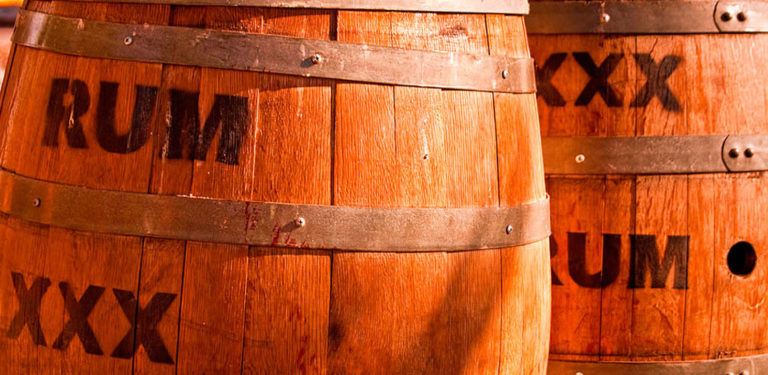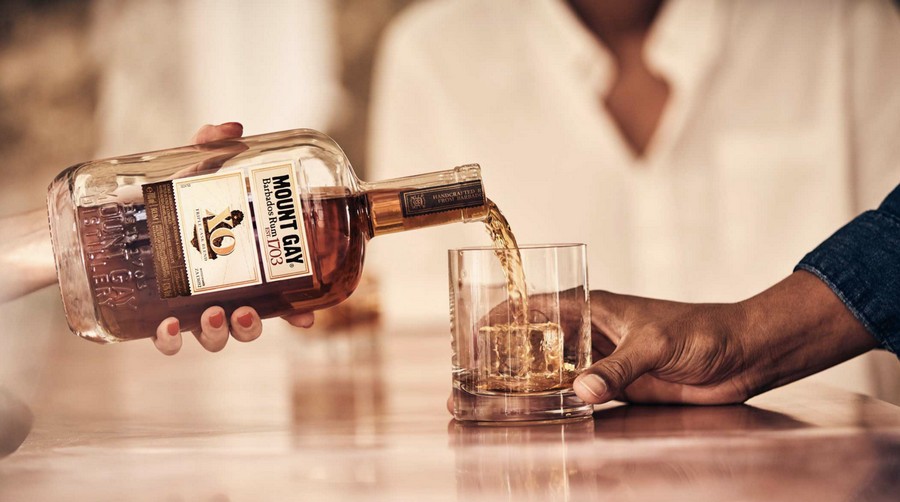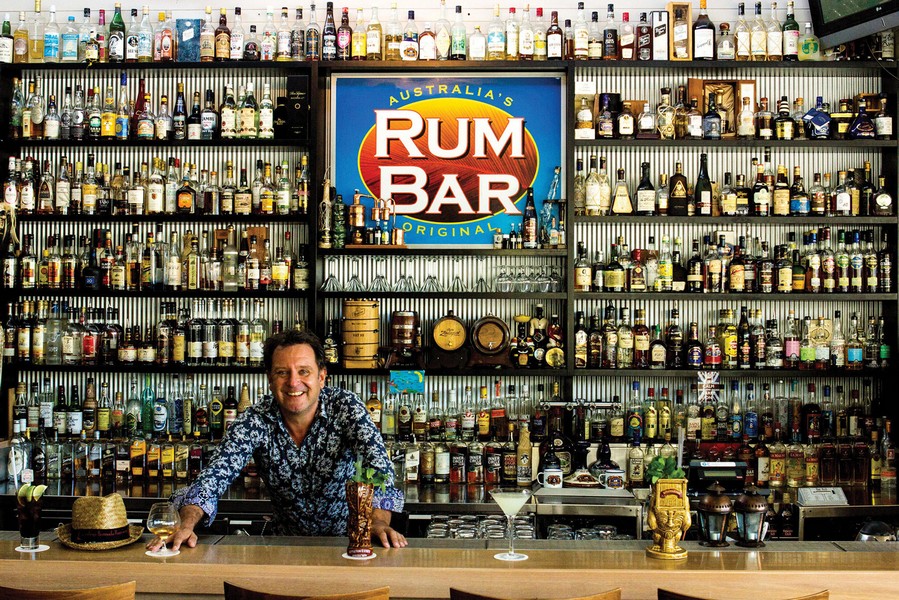Long before there was any other spirit crafted, distilled, and manufactured, there was rum. It is the first branded spirit ever made. An early version of rum dates back to antiquity. Beverages created by using the fermentation of sugarcane juice are believed to have first occurred in China and then found their way around civilization. The Malay people, using this technique, produced a drink called Brum thousands of years ago. And the guy who has had his hand in everything from pasta to ice cream, Marco Polo, recorded a 14th-century account of a “very good wine of sugar” from an area that became modern-day Iran. In later years, rum production was recorded in Brazil in the 1620s, and in the doomed Swedish ship Vasa that sank in 1628, rum was found in a tin bottle.
It is believed that the modern-day version of rum was first distilled on the sugarcane plantations of the Caribbean in the 17th century, specifically on the island of Barbados. The Portuguese discovered the island of Barbados, naming the island after the lush and “bearded” trees that grew in abundance. It was later determined that the island had rich soil and ideal weather conditions for growing sugar cane. Plantation workers first discovered that molasses, a byproduct of the sugar refining process, could be made into alcohol by boiling it down multiple times to produce sugar crystals. By adding the distillation process, the impurities would be removed from the fermented liquid, and after some resting time in oak barrels, you would have rum.
Rum was called by many names like rumbullion and rumbustion (slang term for uproar), and the Barbadians once called it “kill-divil.” Strange names, but according to a 1651 document, “The chief fuddling they make in the island is Rumbullion, and this is made of sugar canes distilled, a hot, hellish, and terrible liquor.” It was also called “Black Gold,” as the Barbadian molasses was so profitable and in high demand that it turned the main port in Bridgetown into one of the wealthiest ports in the world because of this home-grown product.
After rum’s development in the Caribbean, the drink’s popularity spread to the North. Alcohol in its various forms – the stronger, the better – was the great sustainer of eighteenth-century America, and Rum was King. It was estimated that colonists were downing, per man, woman, AND child, 3 Imperials (or 3 ¾ gallons) of rum per year. Apparently, it quelled the thirst that resulted from too much of that salted meat and fish that was in their diet.
To support the demand for the drink, rum distilleries were created in the Colonies. The first was in 1664 in modern-day Staten Island, Boston in 1667, and then one in Rhode Island shortly after. The rum made in Rhode Island was considered acceptable currency in Europe for a short time.
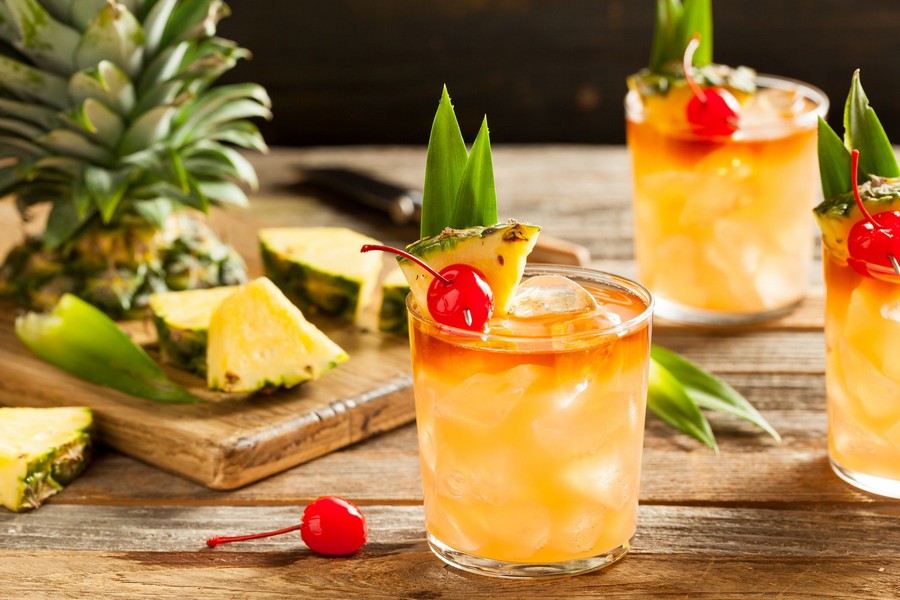
Drinking rum became a part of the social fiber. While the act of drinking the spirit became an icebreaker for meeting new people, it oddly became a political tradition. When George Washington ran for the legislature in 1758, his agent gave out almost three Imperials of beer, wine, cider, or rum to every voter.
Washington was concerned about the extent of this hospitality, fearing his agent might have been too stingy by only providing three Imperials. Washington continued to use rum to his political advantage after the American Revolution by insisting on having a barrel of rum at his 1789 inauguration. Rum became a litmus test for politicians. Though the candidates, like Washington, continued to use rum to influence the outcome, it was really a win if the candidates drank rum with the people. It demonstrated their political independence and an example that they are “one of the people.”
Barbados, and other Caribbean islands recognizing the advantage of molasses for the Colonies, and sugar for the Europeans needed a large labor force. The ugly answer became known as the triangular trade, which involved moving slaves, molasses, and rum between Africa, the Caribbean, the Colonies, and sometimes Europe. This trade route was incredibly profitable, and it continued to provide the Colonies with the molasses they were demanding in order to create the rum. Historians have even argued that it was not the tax on Tea that pushed the colonists to war but the Molasses Act of 1733. The British imposed Molasses Act placed a heavy tax on sugar and molasses coming from anywhere except the British sugar islands in the Caribbean (not Barbados). Another result of the Molasses Act was that it gave way to home-grown drinks like American whiskey, which were not taxed by the British.
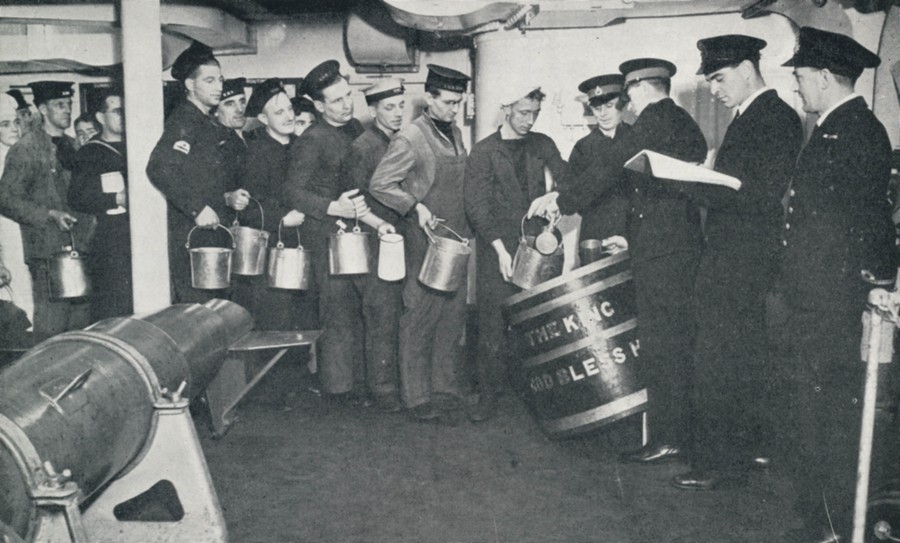
Rum was also a favorite of the British Royal Navy. Until 1740, rum had rarely been dispensed “neat” or without any mixtures. The first commander to dilute the ration was British Admiral Edward Vernon, nicknamed “old grog” due to the grogram cloak he wore in rough, wet weather. Vernon’s nickname became associated with the now “watered” down rum, called grog. This change in how rum was served was for a few valid reasons; it would limit the “grogginess” the sailors exhibited from consumption, and more importantly, it was a way to prevent scurvy. The addition of water, and lemon juice, minimized the overall effect on the soldiers and provided a significant health benefit. Every man’s daily ration of grog was half a pint, to be drank at his leisure. By the 19th century, the British substituted the lemons with limes, believing (incorrectly) that limes were better than lemons for scurvy. The British sailors given the “grog” soon received the nickname by the American’s as “limeys.” Until 1970, The Royal Navy continued to give its sailors a daily rum ration, known as a “tot” or a “totty.”
Today, most of the world’s rum production occurs in the Caribbean, Latin America, South Pacific, Asia, and North America. However, it is still on the easternmost island in the West Indies, which lays claim to the oldest existing rum distillery globally, Mount Gay Rum. On February 20, 1703, the Mount Gay Rum Company was established on the Caribbean island of Barbados. Though it is now under the majority ownership of liquor conglomerate Remy Cointreau, the island proudly continues to showcase this rum.
Another very popular brand of rum is Bacardi, founded in the 1800s by Spanish-born Facundo Bacardí Massó, whose family immigrated to Cuba when he was 16. Facundo developed a proprietary strain of yeast that gave Bacardi its clean flavor profile, filtered it through charcoal to remove impurities, and aged the rum in white oak barrels to mellow it. The result was the first clear, or “white,” rum in the world.
Facundo opened a small distillery with his brother-in-law, marking the beginning of Bacardi’s history. The years to follow were turbulent times for the citizens of Cuba, with the Cuban War of Independence in the 1880s and 1890s. Facundo’s eldest son, Emilio, was imprisoned and exiled for fighting in the rebel army against Spain. The women of the family were exiled to Jamaica.
Starting in 1912, after the United States occupation of Cuba, the company expanded with bottling plants in Barcelona and New York City. When prohibition struck the United States in the 1920s, Cuba became a hotspot for American tourists who could enjoy Bacardi’s rum freely.
Bacardi continued to be passed down as a family business through three generations and moved its headquarters to Havana in 1930. The rum’s popularity continued to grow, forever associating Cuba with rum and Bacardi in particular. It expanded globally to Mexico, Puerto Rico, and the United States.
When Fidel Castro’s Cuban Revolution took hold of the island in the 1960s, Bacardi managed to hide its proprietary formula, trademark, and assets in the Bahamas. Eventually, it moved its operation to Puerto Rico and Mexico.
The company is one of the largest privately held, family-owned spirits companies in the world. Originally known for its eponymous Bacardi white rum, it now has a portfolio of more than 200 brands and labels. Family-owned for seven generations, Bacardi Limited employs more than 7,000 people and in 2020 sold 160 million liters of spirits in approximately 170 countries.
Rum has many fans around the world. One who is well known globally is Desmond Tutu. It was Desmond who once pined, “I wonder whether they have rum and Coke in Heaven? Maybe it’s too mundane a pleasure, but I hope so — as a sundowner. Except, of course, the sun never goes down there. Oh, man, this heaven is going to take some getting used to.”


